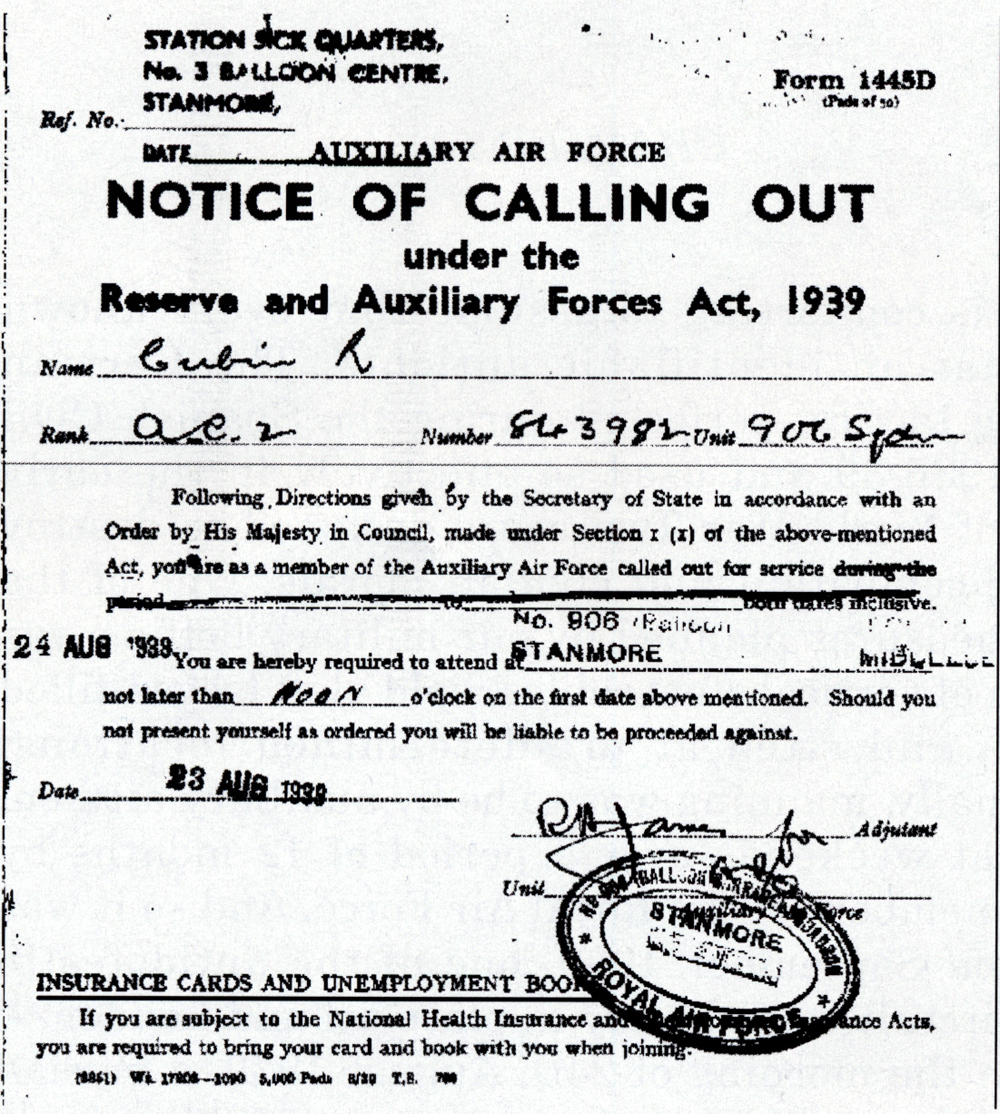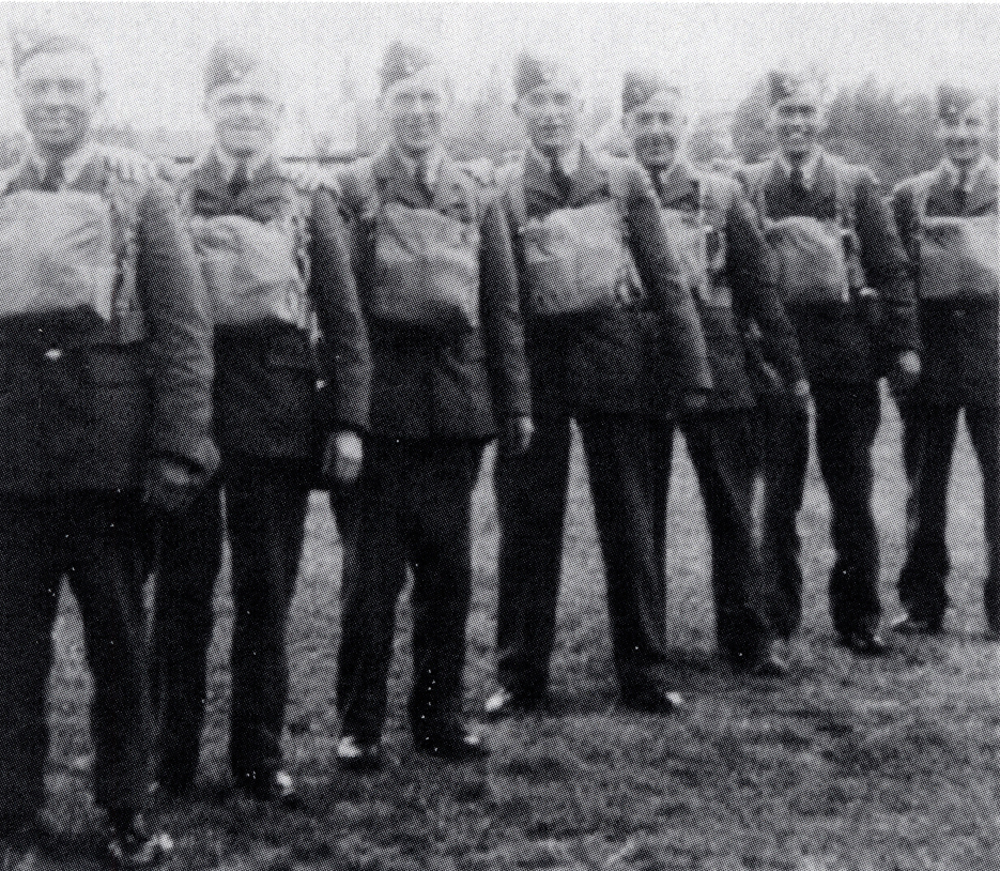North Queensferry Barrage Balloons – 1
The Barrage Balloon Service
| < Intro | Δ Index | Destination Fife > |
Barrage balloons were developed in the late 1930s as a countermeasure to bombing raids. A set of vertical steel cables attached to hydrogen-filled balloons formed a defensive curtain round the site of any potential target. sites were to be manned by auxiliary airmen, who had been trained weekends
R.A.F. Balloon Command was established in 1938, in anticipation of the need to defend key targets from air raids. In case of war, the balloon sites would be manned by members of the Auxiliary Air Force – factory, bank, local government and office workers who trained at weekends over a period of 12 months by regular members of the RAF.
Later in the war these were largely replaced by WAAF (Womens Auxiliary Air Force) personnel.
On 24th August 1939, calling-out notices arrived across the Home Counties exhorting the recipients to report for duty at their designated balloon station.
 Form 1445D requiring AC.2 Cubin R. to report for duty
Form 1445D requiring AC.2 Cubin R. to report for duty
Bob Cubin’s destination was Stanmore in Middlesex, where he was kitted out and dispatched to London where balloon were deployed at various locations.
 Practice Balloon barrage Crew, Stanmore 1939.
Practice Balloon barrage Crew, Stanmore 1939.
Haversacks contain gas masks.
Bob is third from the left.
Following Hitler’s invasion of Poland on 1st September 1939, Britain declared war on Sunday 3rd September. For a few weeks, Western Europe was eerily quiet during the ‘phoney war’. Preparations for war continued in earnest, but there were few signs of conflict, and civilians who had been evacuated from London in the first months drifted back into the city. Gas masks were distributed, and everybody waited for the proper war to begin.
 Auxiliary Air Force, Stanmore 1939. Bob is third from left in the second row.
Auxiliary Air Force, Stanmore 1939. Bob is third from left in the second row.
| < Intro | Δ Index | Destination Fife > |